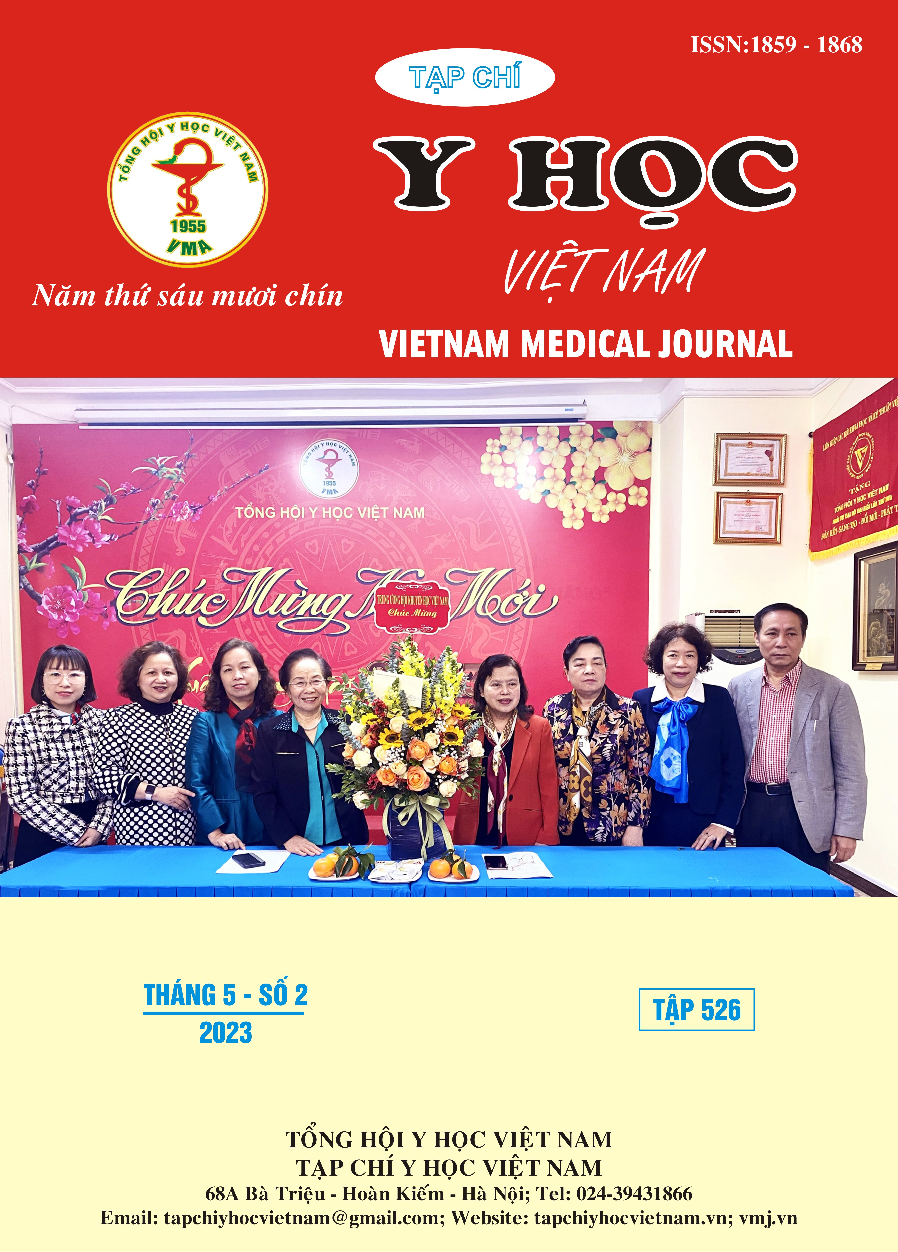SOME INFLUENTIAL FACTORS AFFECTING RESULTS IN BRONCHIAL ASTHMA PREVENTION BY SINGULAIR IN NGHE AN OBSTETRICS AND PEDIATRICS HOSPITAL
Main Article Content
Abstract
Objectives: To research some influential factors affecting results in bronchial asthma prevention in children by singulair, in Nghe An Obstetrics and Pediatrics Hospital in 2020. Research subjects and methods: Descriptive, prospective study, intervention with comparison before and after on 60 patients diagnosed with bronchial asthma when coming for examination and consultation at the Respiratory Department, Nghe An Obstetrics and Pediatrics Hospital. Results: Patients, whose parents had graduate and post-graduate education degrees, who controlled their asthma after 3 months, had a higher rate than the group whose parents had high school and college education degrees (71% compared with 37.9%) with a statistically significant difference (p<0.05). Patients whose parents had knowledge of asthma had better asthma control after 3 months. Patients took the drug at the right dose and on time had better asthma control after 3 months. The group of patients without allergic rhinitis had a higher rate of asthma control after 3 months than the group without allergic rhinitis (71.4% and 32%) with a statistically significant difference (p< 0.01). Conclusion: The higher the parental education degree, the better the asthma control. The patient's parents' knowledge about asthma and the patient's adherence to treatment is directly proportional to the child's asthma control level. Patients with allergic rhinitis have an effect on the degree of asthma control.
Article Details
Keywords
Influential factors, results in bronchial asthma prevention, singulair, Nghe An Obstetrics and Pediatrics Hospital.
References
2. Dharmage SC, Perret JL, Custovic A (2019). Epidemiology of Asthma in Children and Adults. Front Pediatr, 7:246.
3. O'Toole J, Mikulic L, Kaminsky DA (2016). Epidemiology and Pulmonary Physiology of Severe Asthma. Immunol Allergy Clin North Am. 36(3):425-38.
4. Trần Thúy Hạnh, Nguyễn Văn Đoàn (2013). Tình hình kiểm soát hen phế quản ở Việt Nam. Tạp chí Y học lâm sàng, 70 (2), 64-69.
5. Lê Thị Minh Hương (2007). Đánh giá bước đầu về tình hình quản lý hen trẻ em tại Bệnh viện Nhi Trung ương. Tạp chí Y học Việt Nam, 124 (2), 157-163.
6. Helen K. Reddel, Leonard B. Bacharier, et al (2021). Global Initiative for Asthma Strategy 2021: executive summary and rationale for key changes. European Respiratory Journal.
7. Đỗ Thị Hạnh, Nguyễn Thị Diệu Thúy, Bùi Công Thắng, Phạm Quốc Khương. Kiểu hình hen phế quản ở trẻ trên 5 tuổi tại Bệnh viện Nhi Trung ương (2019). Tạp chí Nghiên cứu và Thực hành Nhi khoa, 73(6), 41-48.
8. Eric P de Groot, Anke Nijkamp, Eric J Duiverman, et al (2012). Allergic rhinitis is associated with poor asthma control in children with asthma. Thorax, 67(7):582-587.
9. Tenero, L., Vaia, R., Ferrante, G., Maule, M., Venditto, L., et al (2023). Diagnosis and Management of Allergic Rhinitis in Asthmatic Children. Journal of asthma and allergy, 16, 45–57.
10. Di Cara, G., Carelli, A., Latini, A., Panfili, E., Bizzarri, I., et al. (2015). Severity of allergic rhinitis and asthma development in children. The World Allergy Organization journal, 8(1), 13.


